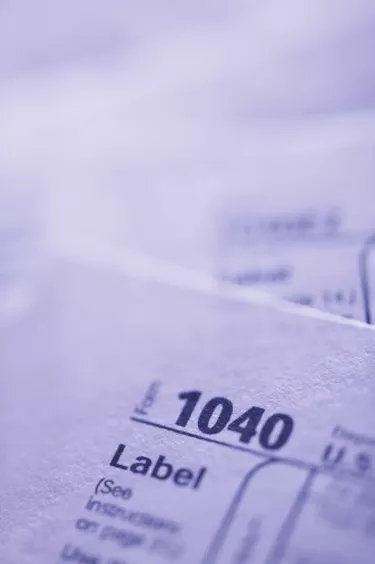
When you start a new job, your employer should give you a W-4 form to fill out. This form includes your name and Social Security number, as well the number of exemptions you wish to claim. The lower the number of allowances you claim on the W-4, the higher your regular withholding will be. If you owed money to the IRS when you did your taxes last year, you can rectify that situation by filling out a new W-4 and changing the number of allowances you claim.
Actual Allowances
Video of the Day
If your main source of income is your job, you should be able to claim the actual number of allowances you have and come out fairly even on your tax return. For instance, if you are a single mother raising two children, you would claim an allowance for yourself and two more for your children when you complete your W-4 form. The employer then withholds taxes based on the number of allowances you provide.
Video of the Day
Additional Income
If you have a substantial amount of income outside your job, such as income from freelancing or money from investments, you should claim fewer allowances than you actually have. Claiming fewer allowances means the employer withholds more money from each paycheck, and that can reduce the amount you owe at the end of the year, or even put you in line for a refund. For instance, if you have income from interest and dividends in addition to your wages, it makes sense to lower the number of allowances you claim. If you have one child, you might want to claim zero allowances instead of the two you are due. This increases the amount of current withholding but reduces any additional amount you would otherwise owe.
Previous Tax Return
Look at your tax return from last year to see how much you owed the IRS. If you owed the IRS less than $1,000, lowering the number of allowances you claim by one should cause you to break even or possibly even get a refund. If you owed more than that amount, you may need to lower your allowances more, possibly claiming no exemptions at all, to eliminate any extra tax liability.
Running the Numbers
It makes sense to run the numbers to see how each change in your withholding will impact your tax refund or tax liability. You can use your pay stub to annualize both the amount you expect to earn for the year and the amount you expect to pay in taxes. Just multiply your gross pay and federal income tax withheld by the number of pay periods and plug those numbers into a tax preparation software package. Then add any additonal income you expect to receive to see the amount of your anticipated refund or the amount you may owe the IRS. If you expect to owe money even after dropping your allowances to zero, you can redo your W-4 form and ask that additional money be withheld from each paycheck.